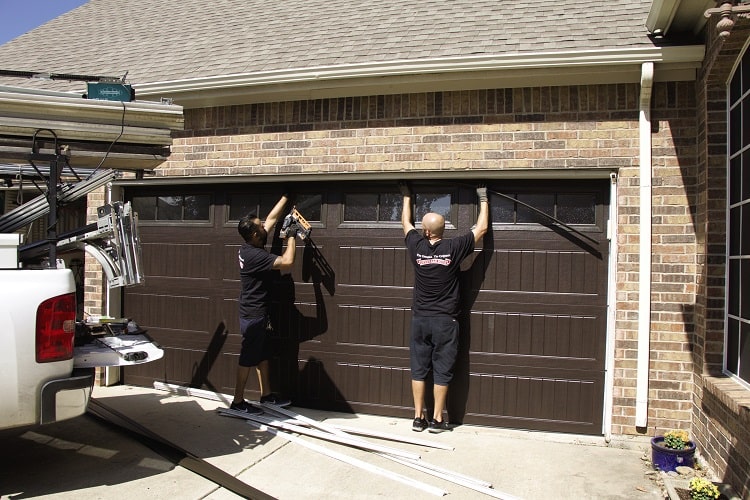Divided into two parts, including ‘checking the tracks’, and ‘checking other components’, this brief guide to basic garage door repairs, provides some DIY garage door repair and maintenance tips, that almost anyone can follow.

But, if you do have more serious issues with your garage door, such as tension spring problems, or issues with an electric garage door, we’d always recommend you contact a garage door professional .
So, you went to open your garage door this morning and something didn’t feel right – it was catching, and it made an awful noise. Don’t panic – it might just be the tracks, and there are a few things you can do yourself, including:
Checking the mounting brackets: These are the brackets that hold the tracks to the walls, or the ceiling. Check the bolts or screws that hold the brackets in place, and tighten with the correct sized socket or spanner if required.
Examining the tracks for damage: Carefully, and with the garage door closed, examine the tracks for any damage, such as dents or crimps. Then, if necessary, using a rubber mallet or a hammer against a piece of scrap wood, gently tap any minor damage out.
Checking if the tracks are level: If for some reason the mounting brackets have come loose, the tracks might not be in the right position for the door to function. Ideally, for horizontal tracks, the tracks should slant slightly towards the back of the garage, and vertical tracks should be perfectly plumb.
If the tracks are misaligned, slacken off the bolts that hold them in place, and carefully tap to realign them to the correct position. Once aligned, tighten the bolts on the mounting brackets, ensuring you use the correct sized socket or spanner.
Cleaning the tracks: Seeing as you’re examining the tracks anyway, use the opportunity to look for dirt build-up, such as grit, old or dirty grease or leaves etc.
If there is an excessive build-up, use a soft, lint-free cloth and some household cleaner, to remove the offending dirt, and to get the tracks (and the rollers) shining again.
Over time, certain components of your garage door will come loose, or become damaged, so it’s good practice to check every now and then, even if you aren’t having issues. Below, we’ve listed a few garage door components you could potentially check or repair yourself.
Spring plates: : The springs on your garage door will usually be mounted on plates bolted to the inner walls or ceiling of your garage. Carefully check if any have come loose and nip them up tight using the correct sized socket or spanner.
Roller shutter hinges: If you have a roller shutter garage door, check the individual hinges that hold the sections together, and if possible, tighten or replace any that have come loose or are damaged.
Side-hinged garage door hinges: If you have a side-hinged garage door, check the individual hinges to see if they’re broken or need tightening up.
For broken hinges, it’s best to get a replacement, whereas if a hinge has come loose from its fitting, check the screw holes, and if necessary, clean them out, and insert a rawlplug for better grip and stability.
If you’re looking for an experienced garage door repair specialist anywhere in London, or the surrounding areas, contact Garage Doors Ltd. today, either using the website contact form, by email, or by phone, to speak directly to one of our garage door repair experts.